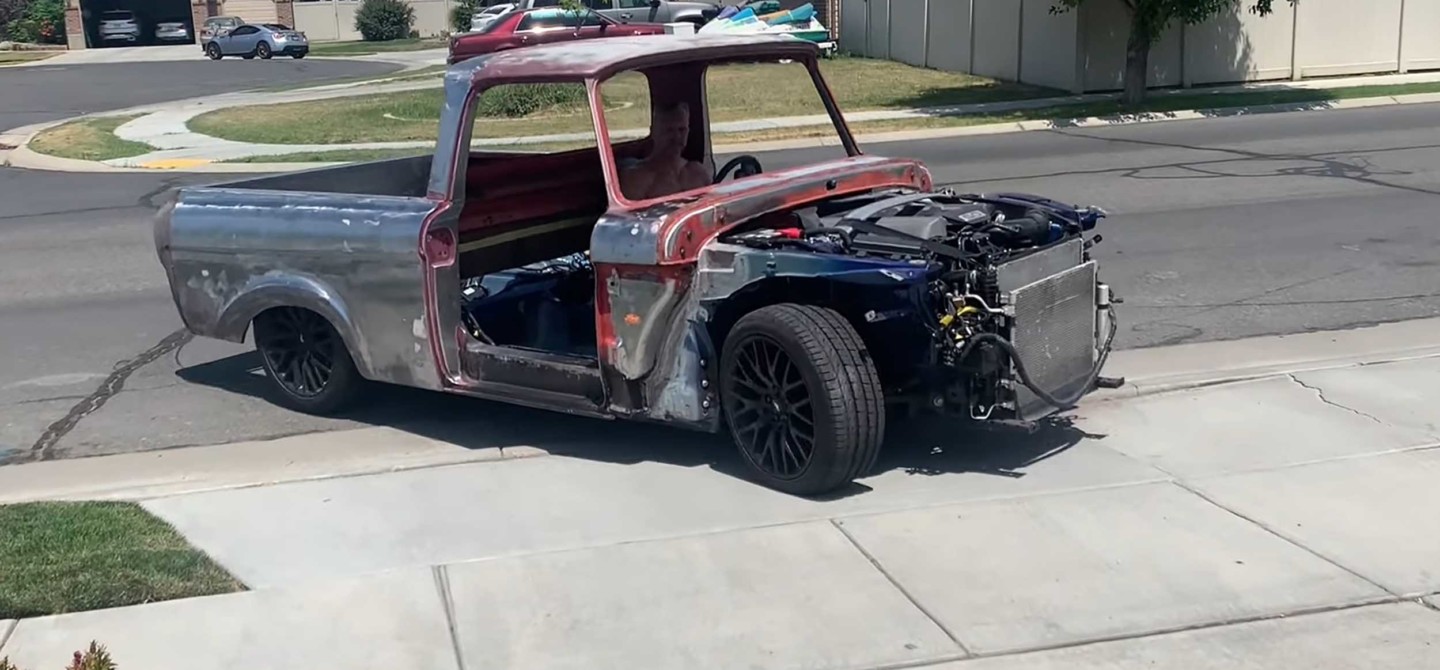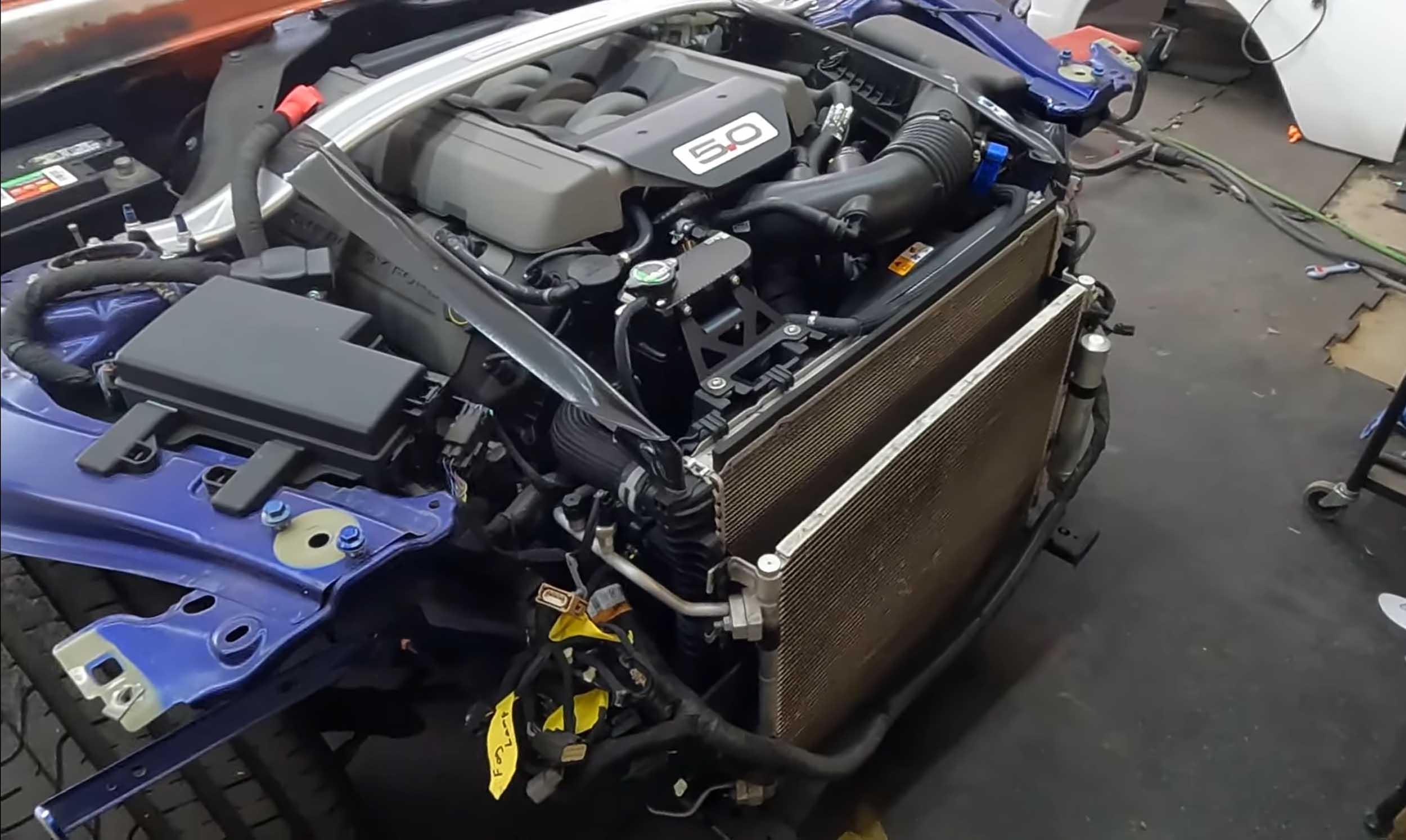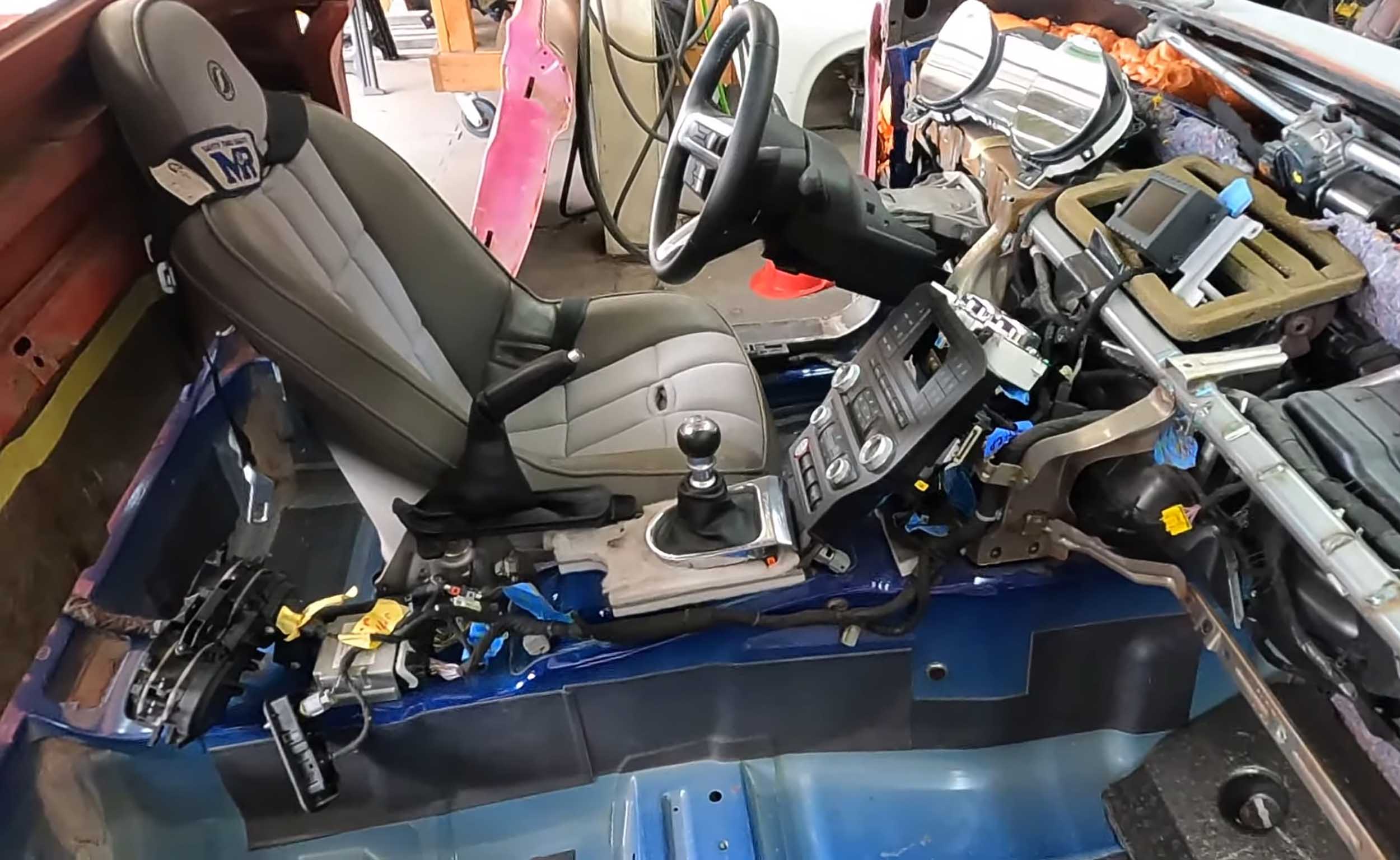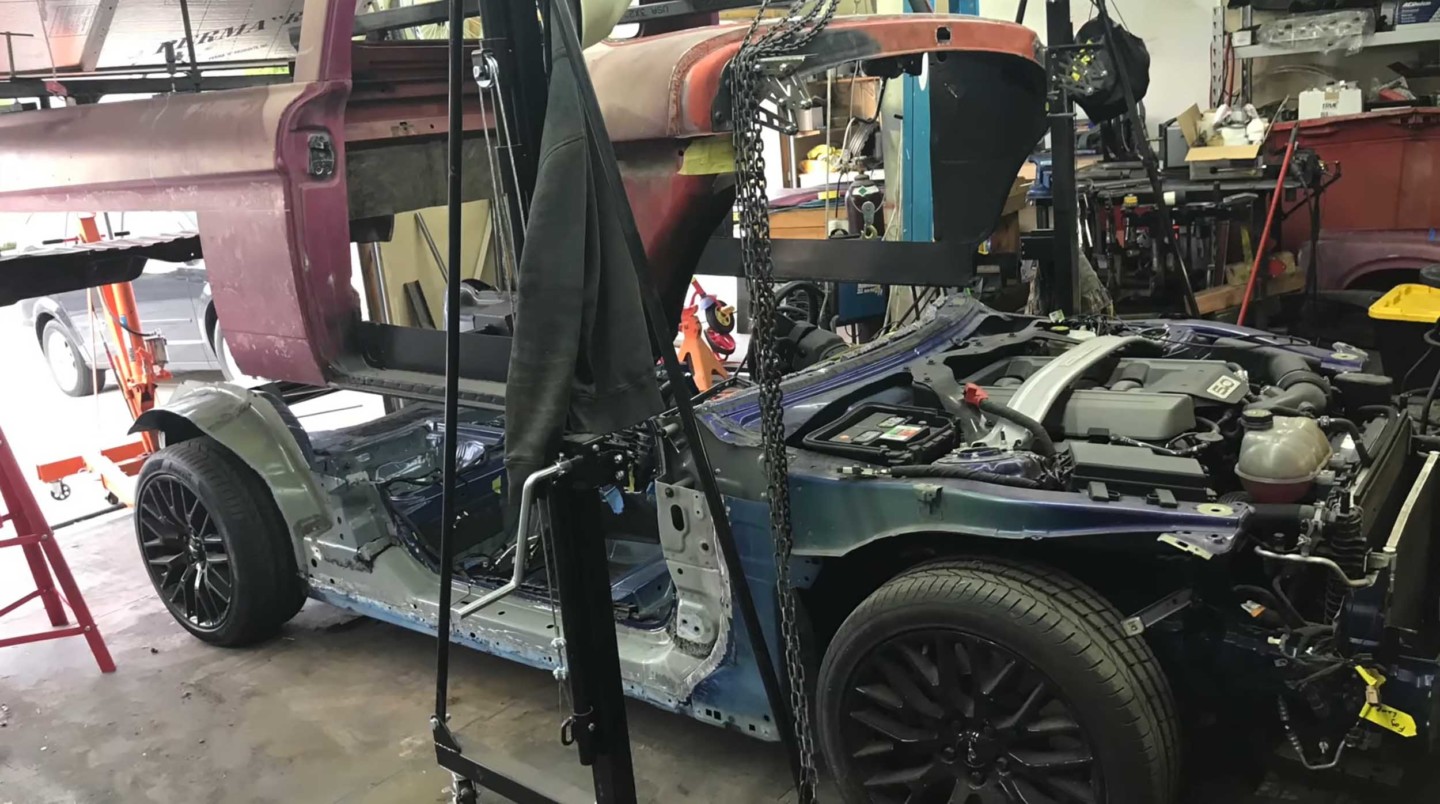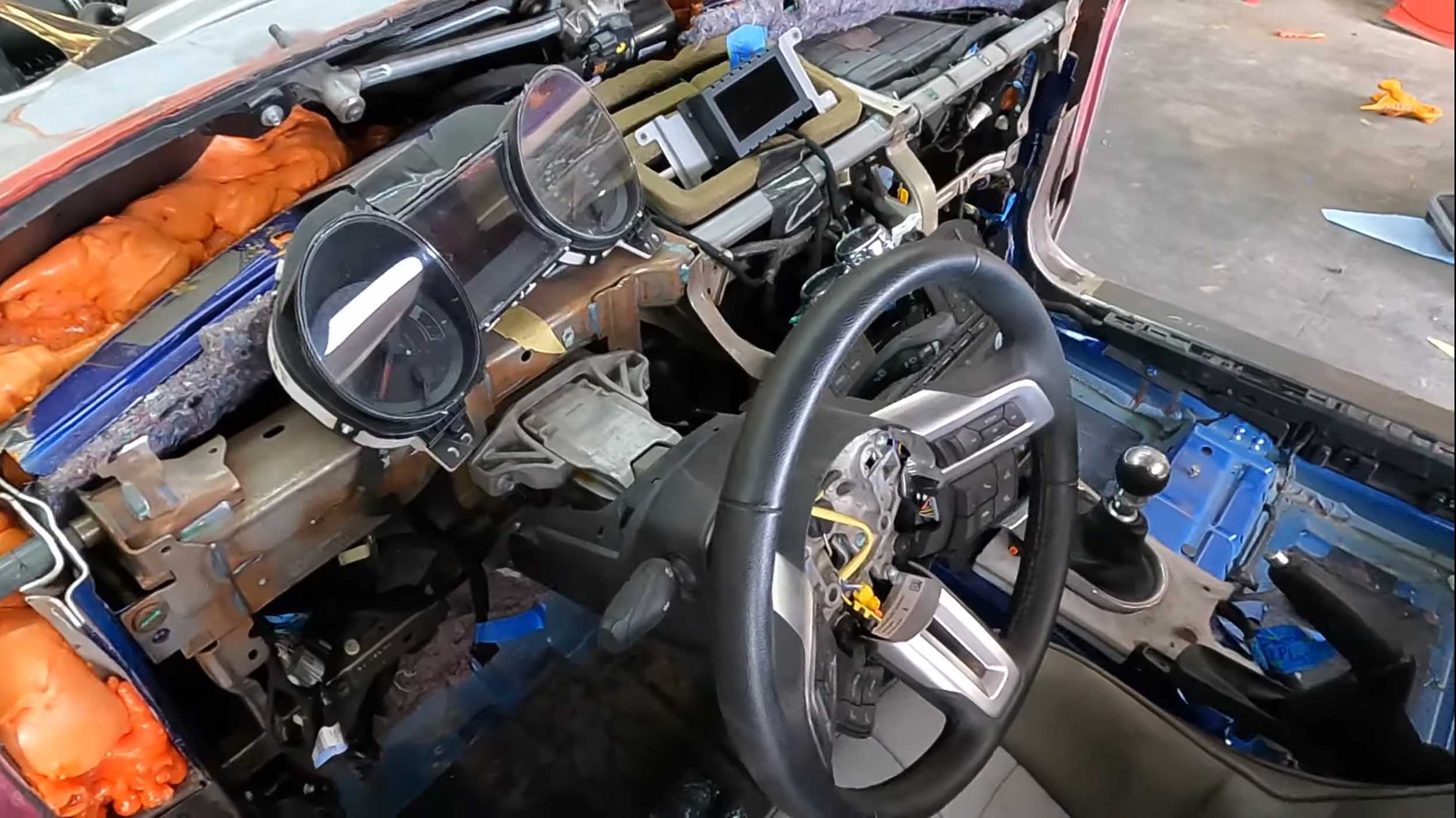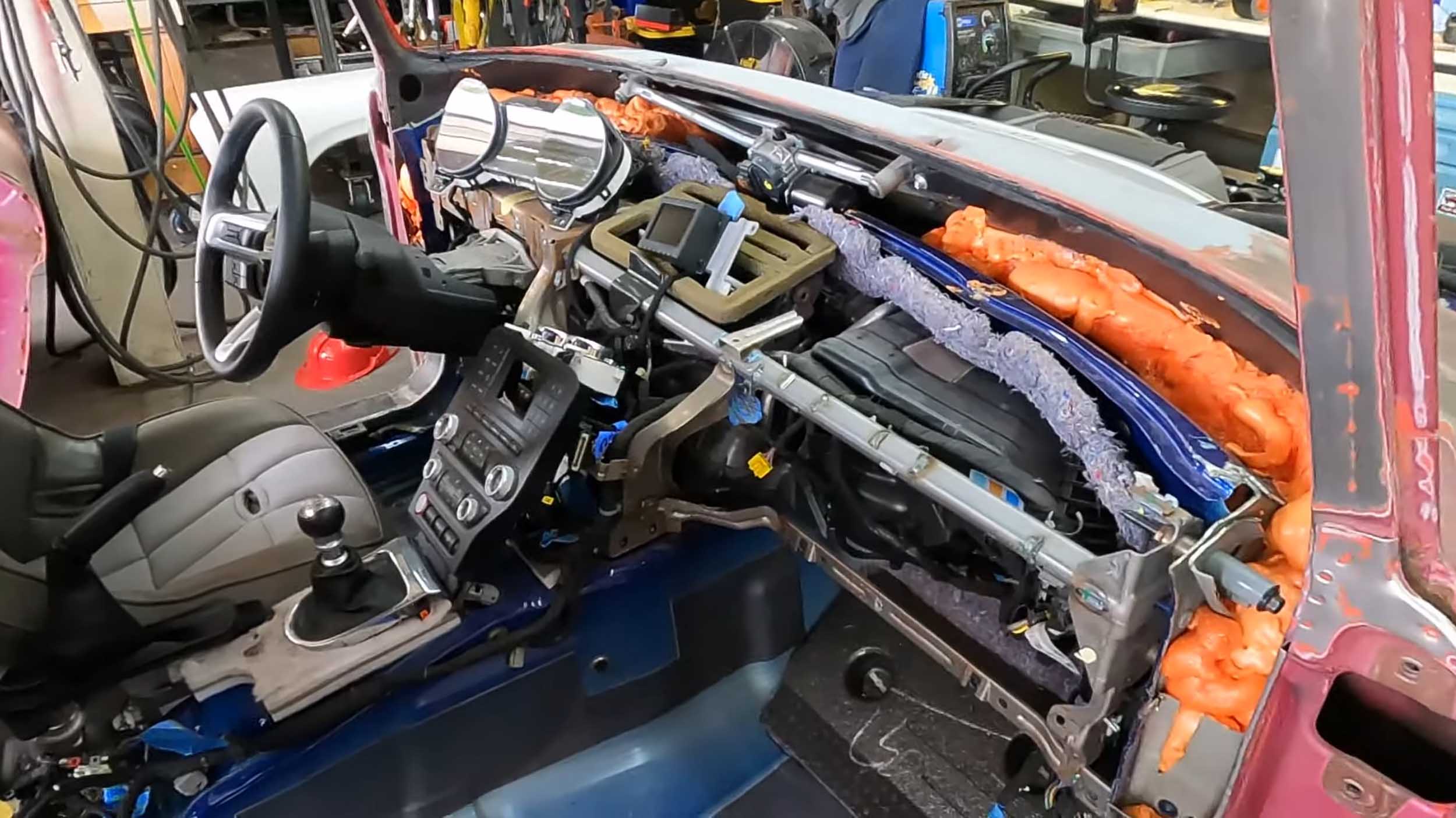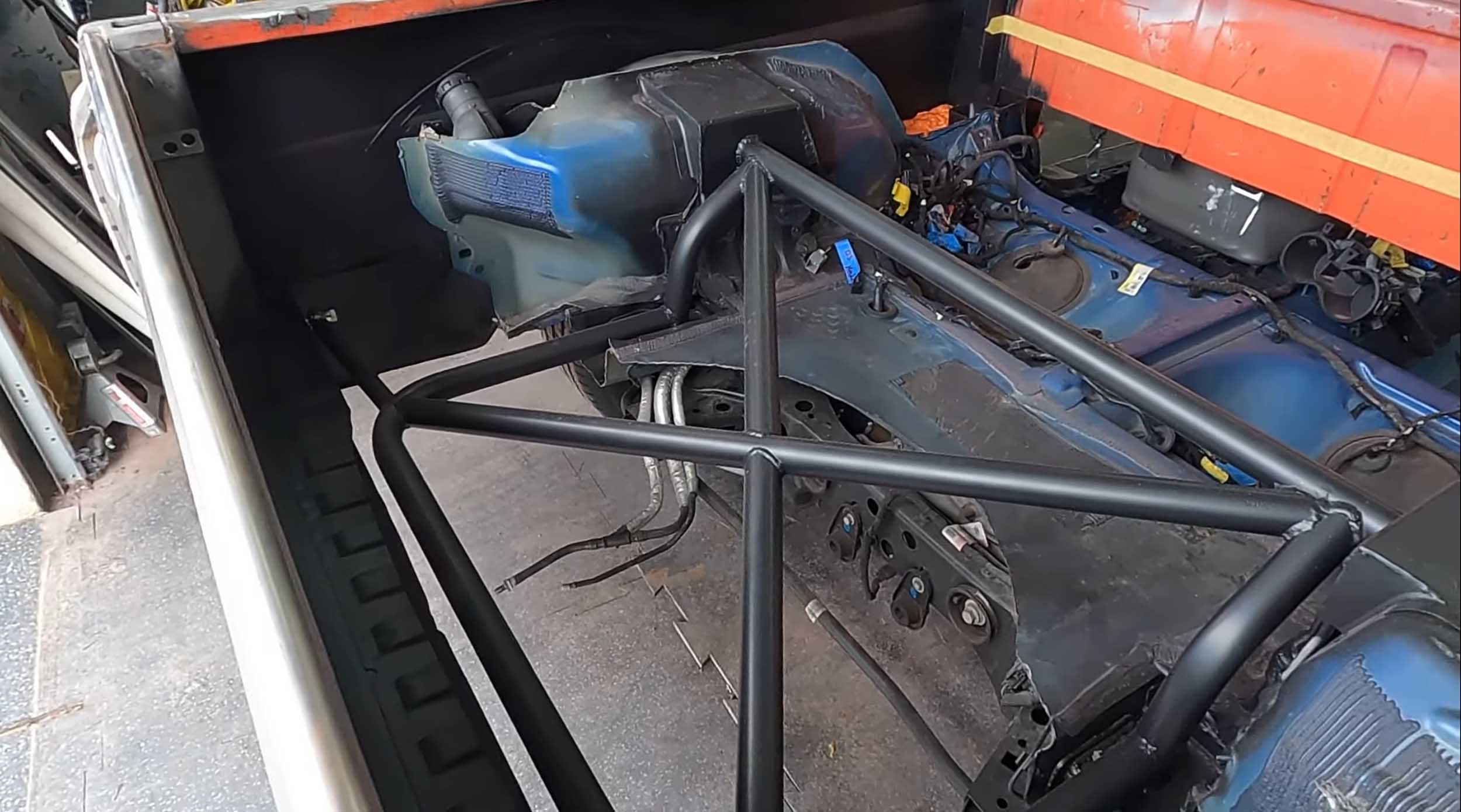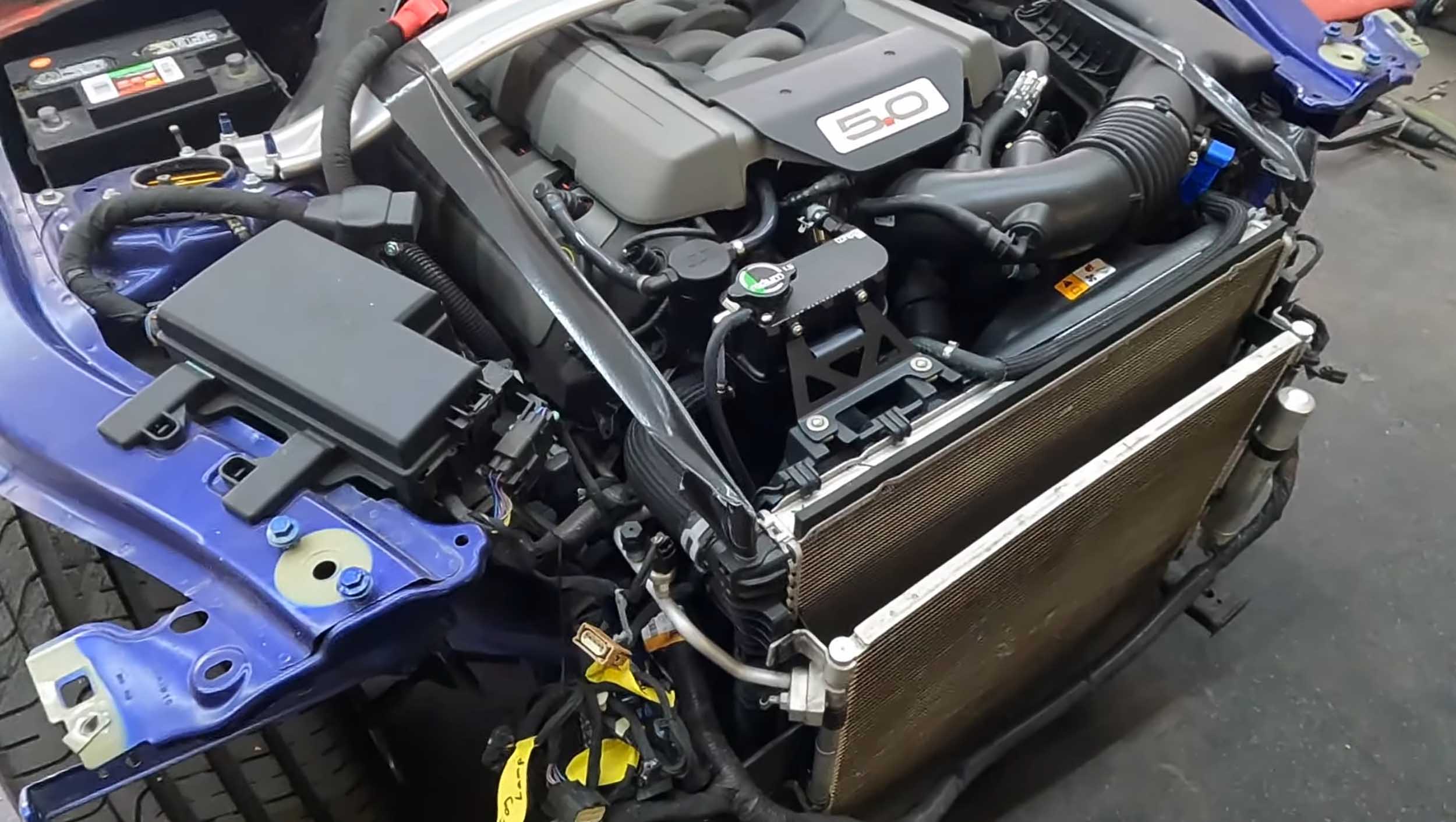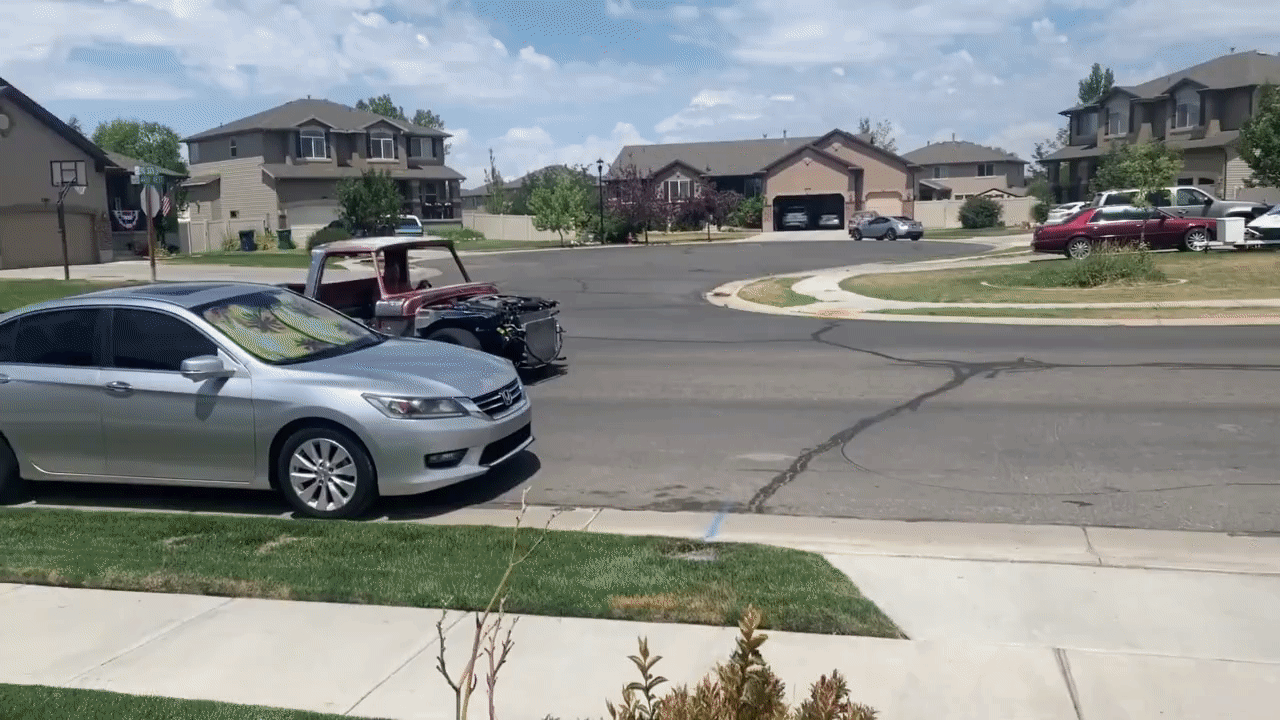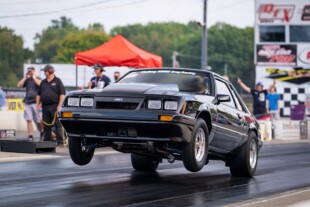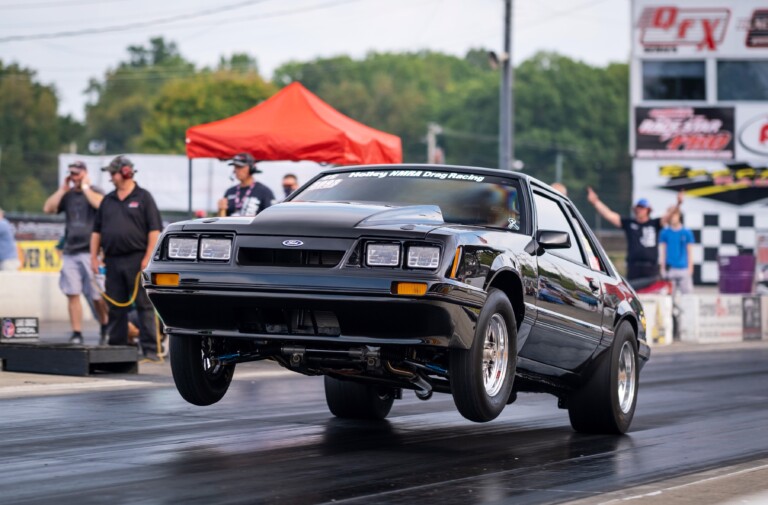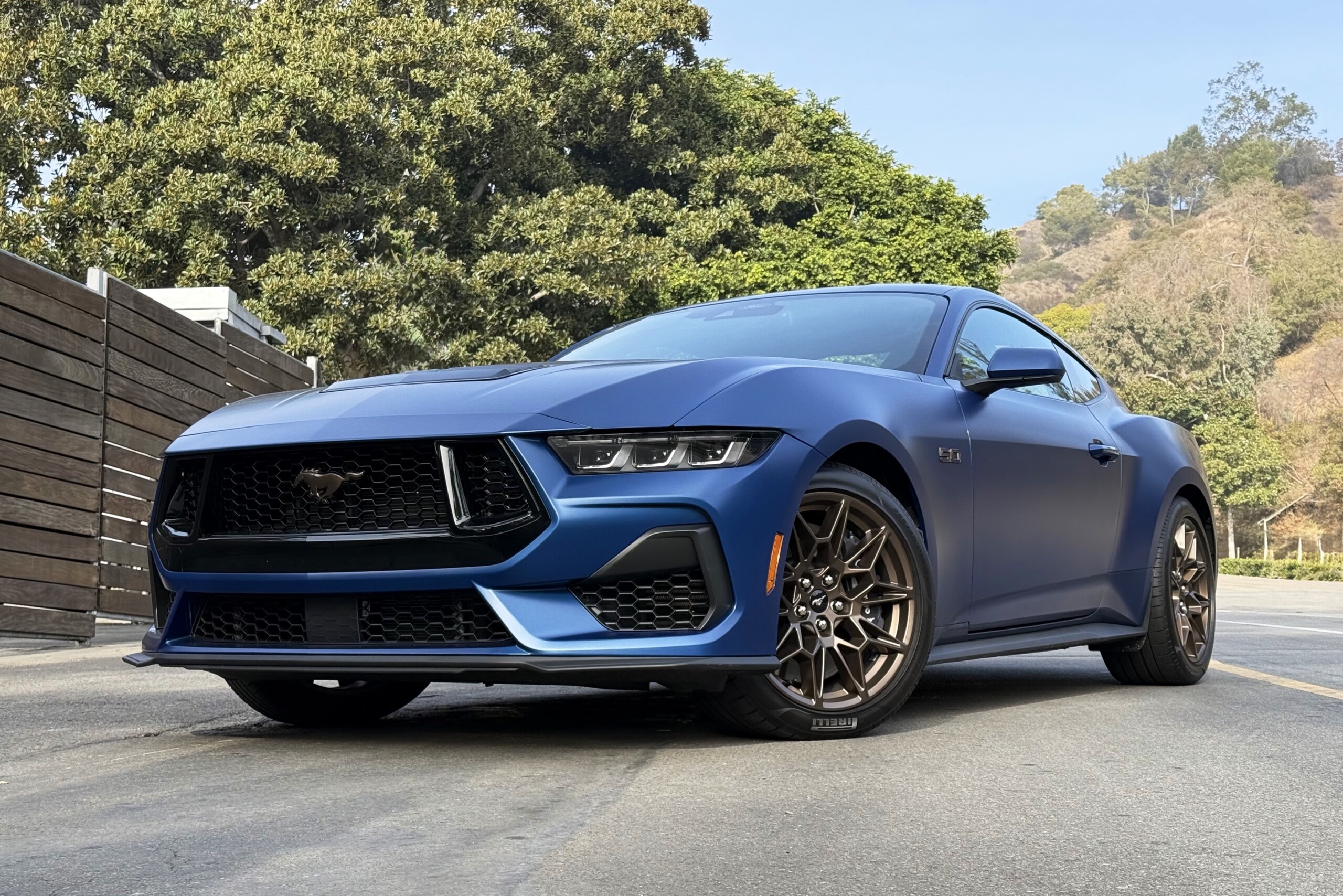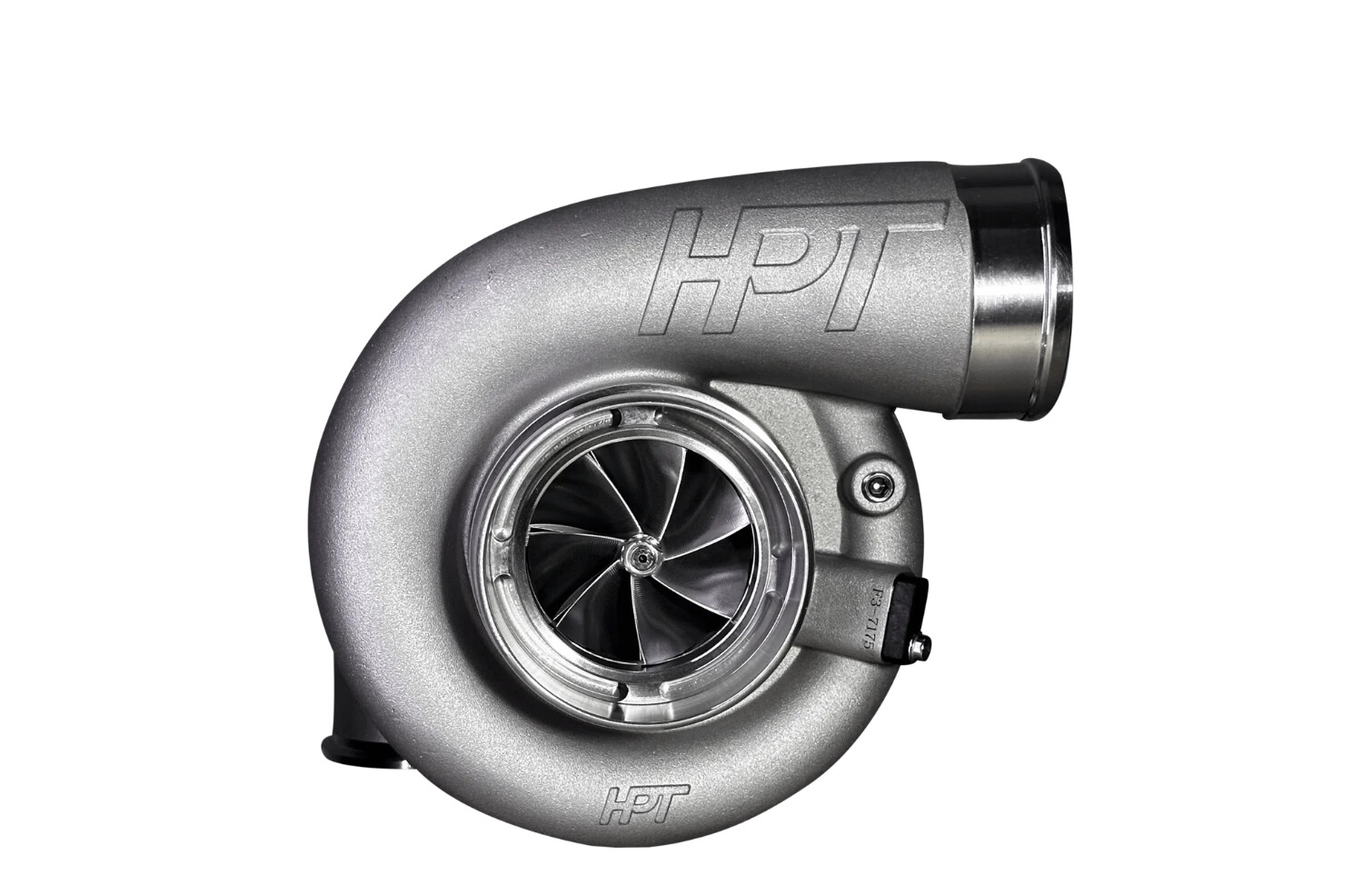I can still remember my aunt wishing that she could get a truck that handled more like a car. You could say that today’s offerings are closer to that reality than ever before, but in the case of this 1962 Ford F100, it has a VERY good reason why it does.
For some of you, hearing the word “unibody” and “pickup truck” carries your mind to Ford’s Ranchero or Econoline-style haulers. But those true blue-bloods will already know there was another unibody offering starting with 1961 production at Ford. Seeking to make a styling statement (and hopefully save a few pounds while gaining a few inches of storage) designers created a totally different heavy hauler by grafting the bed directly to the cab.

The unibody styling made for a much smoother body line, but it didn’t help solidify the vehicle’s torsional strength. Photo: pickuptrucks.com
They say hindsight is 2020, and lessons learned over the next couple of years show why the Blue Oval went back to separating cab and bed once again. The unibody Ford F100 only lasted until 1963. The fact that all four-wheel-drive variants retained the separated cab and bed was the symptomatic tip of the iceberg for the all-in-one heavy hauler. Besides the inability to cope with the twisting an Overlanding-variant may encounter, the unibody trucks also had issues if stuffed too tightly. Owners soon realized if they loaded their trucks too heavily, the doors would stick. There were also additional rusting issues, thanks to the extra nooks and crannies designed into the system.
Thankfully, the 1962 unibody truck found in this video from FactoryFresh didn’t succumb to ferrous termites and the body is in really nice shape. At least, what is left of it. As cool as these trucks are as a part of Ford history, the parts of this truck that didn’t leave the factory in ’62 are what makes this one great.
All modern touches from the Mustang GT are retained, from the torquey Coyote engine to the comforts of the interior cabin.
To call these trucks “unibody” in design is not entirely true. When they left the factory in the early ’60s, they were still rolling on a full-frame style chassis. The F100 in this video has relegated the entire OEM underpinnings to the history books. Instead, it has been upgraded with a complete 2016 Mustang GT. The blend takes place in such a way that it’s hard to tell whether the truck has been upgraded with Mustang stuff, or if the Mustang was infused with vintage tin.
Unlike so many chassis swaps which seek to make old and new into something neither was intended to be, the workmanship that went into melding the two decades is as seamless as the separation between cab and bed. Rather than just bringing over the powertrain of the Mustang, Dustin Nelson of FactoryFreshGarage is grafting in so many other things that make a modern car enjoyable.
Fitting all of today's features into a vintage vehicle can be tough. Dustin makes it look easy.
EVERYTHING, including the launch control, line-lock, HVAC, and ABS will function just as they did when the donor Mustang left the factory. Of course, the ‘Stang’s Coyote engine and 6-speed manual trans will easily upgrade the power department. The donor GT had some rear-end damage which was trimmed off and the body of the truck was then shoehorned over what was left of the Mustang. Even though the truck was originally a short-bed version, an additional 18-inches was removed to make the wheel openings fit those 20-inch factory Mustang rollers. Up front, the radiator and condenser were moved back about 5-inches since the blunt front of the truck is shorter than the ‘Stang’s long nose. While everything looks compressed, it fits quite well.
The radiator and condenser needed to be moved back about five inches.
This 1962 F100 now features independent coil front and rear suspension, and unlike many piece-meal aftermarket upgrades which try to modernize a vehicle through individual components, this truck, when finished, will be as modern as any Mustang available today. Integration of all the newer gizmos is seamless since they were already happily working together in the donor vehicle. While the devil is in the details and we’ve got some time before this truck is show-ready, there is a short video of it driving and running. Now the trick becomes finding a place for all those controls and blending them into a format that continues to work with the truck’s original design.
Check out FactoryFresh’s YouTube channel to watch how this truck progresses, and if the way all the new and old bits blend together is any indicator, the truck is going to be a show-stopper once it’s complete. We’ll be sure to let you know when it is!


